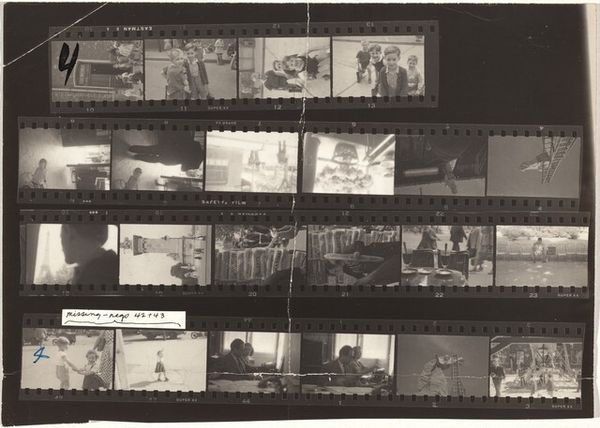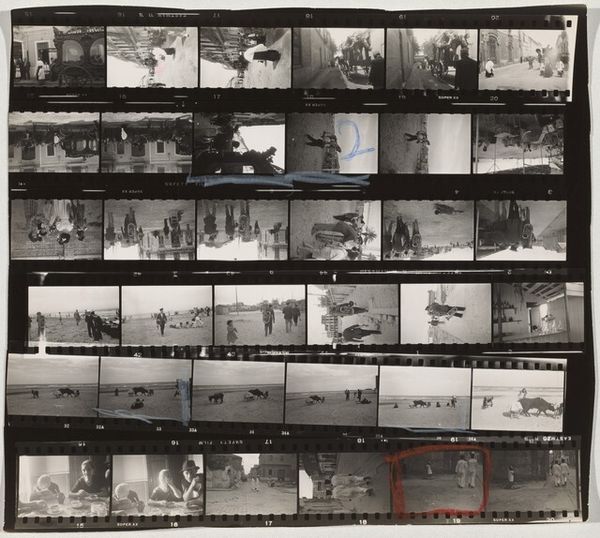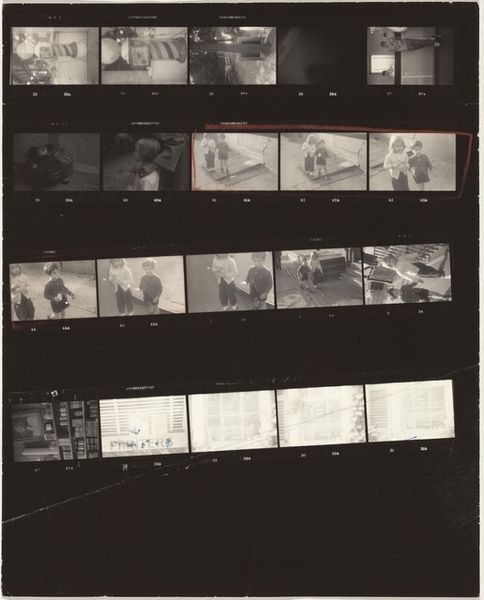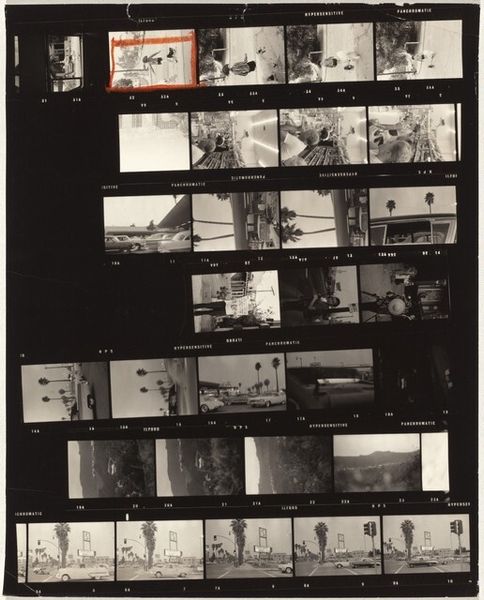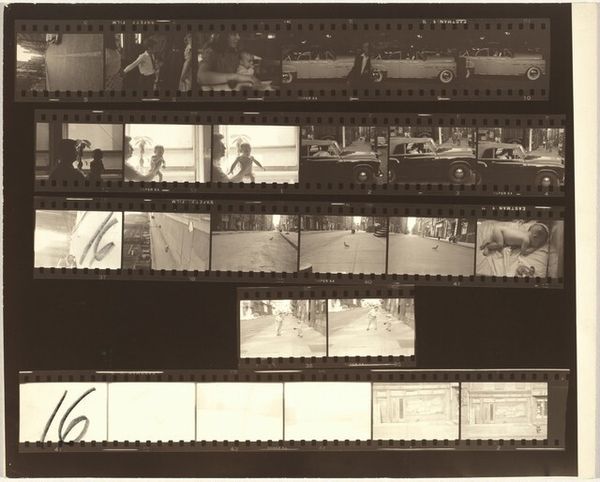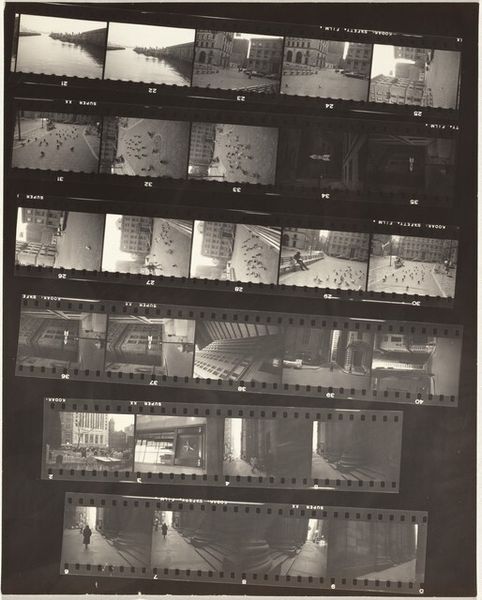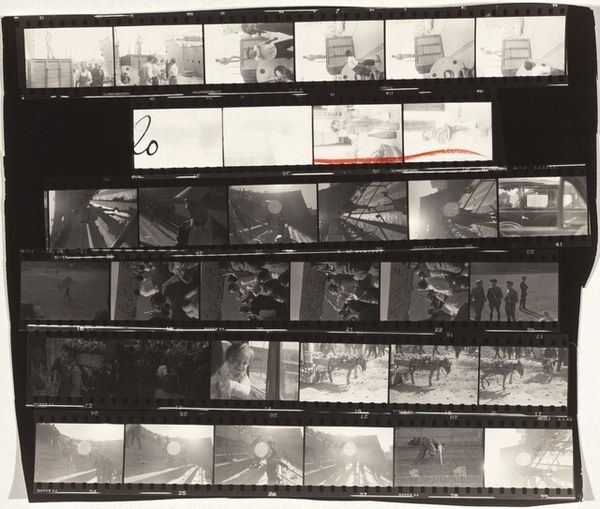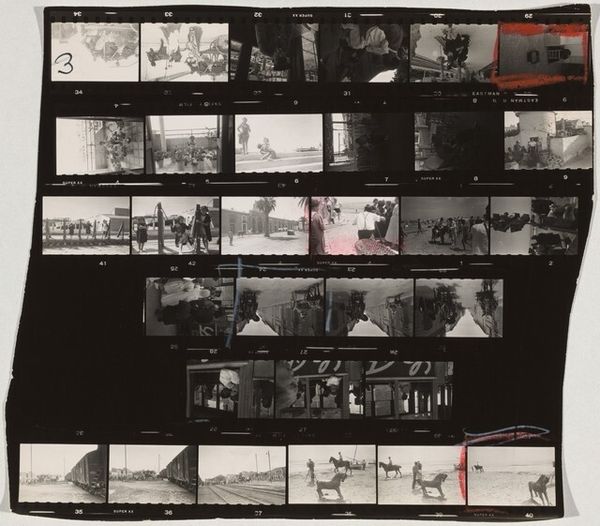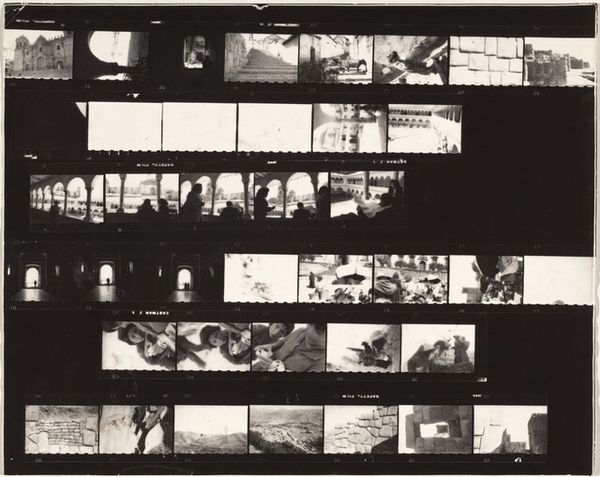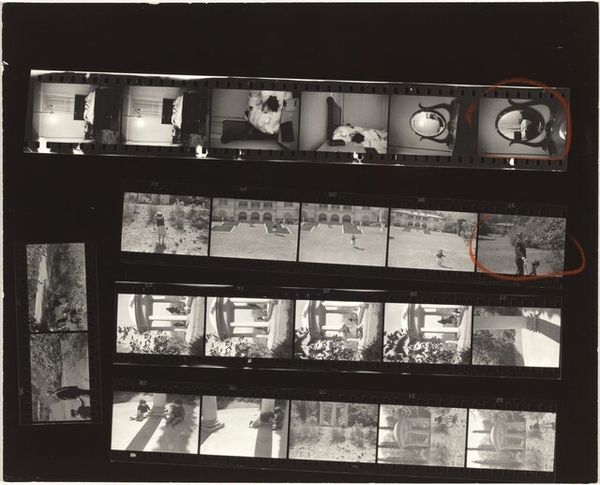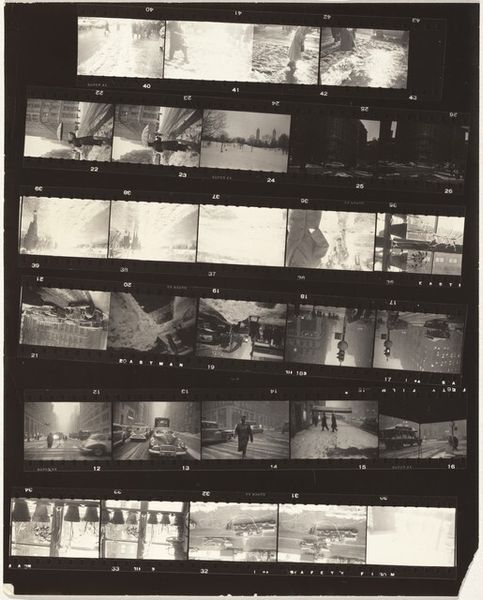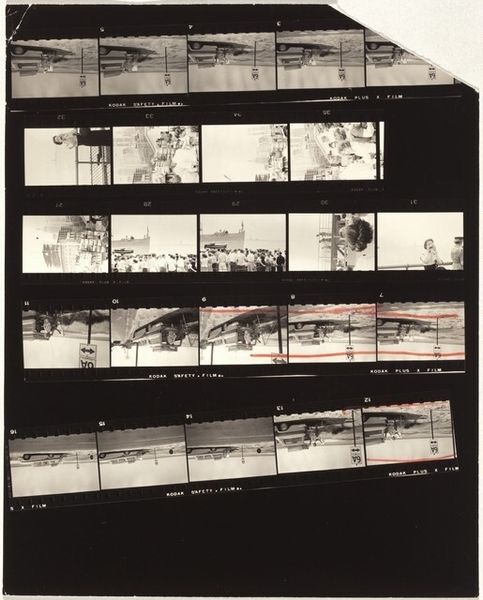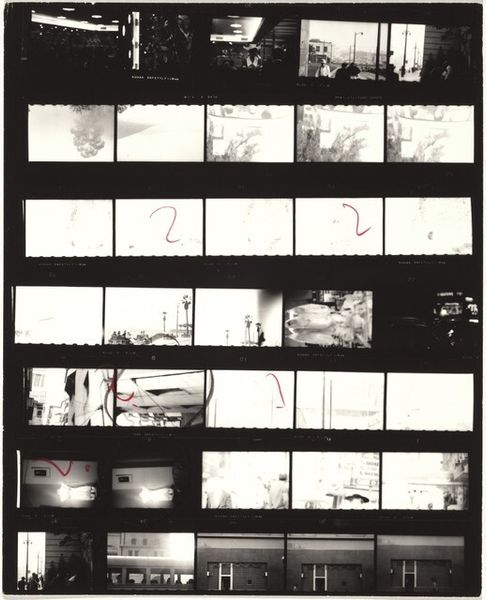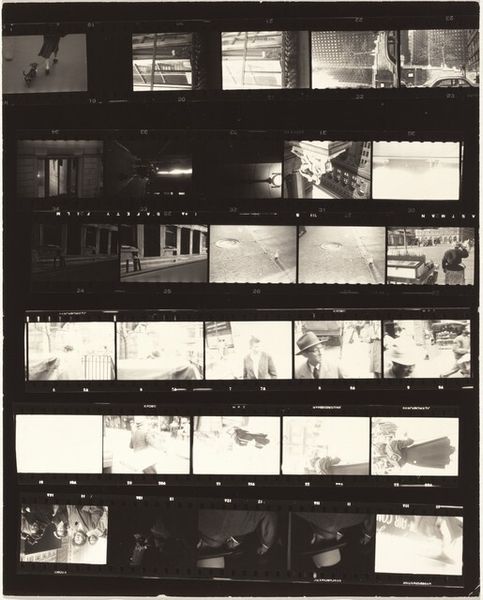
photography, gelatin-silver-print
#
film photography
#
archive photography
#
street-photography
#
photography
#
gelatin-silver-print
#
monochrome
Dimensions: overall: 20.2 x 25.1 cm (7 15/16 x 9 7/8 in.)
Copyright: National Gallery of Art: CC0 1.0
Curator: We’re looking at Robert Frank's “London 54,” a gelatin-silver print made between 1952 and 1953. The piece features rows of photographic film, almost like a contact sheet, offering glimpses of London scenes. Editor: What strikes me is its raw intimacy; like rifling through a lost traveler’s memories, all these misty, blurry windows into another world and time. Curator: It is quite revealing. The decision to present the images this way is key. By showing the film strip, Frank acknowledges the materiality of the medium, demystifying the photographic process and highlighting the relationship between taking the image and its final form. It also begs the question about what makes the cut. Editor: Absolutely. We are seeing the artist's choices, a sort of map of his eye, what he valued. Those scenes of street life, the blurred figures and melancholic architecture all lend a heavy, almost cinematic air, hinting at stories just beyond our grasp. Is he trying to hint about something about alienation in modernity, a city’s inherent loneliness? Curator: His method allows viewers insight into the stages of image-making. Consider the questions, the marks scrawled on some frames. Were they instructions or queries, a conversation with the image itself as the narrative gets framed and brought to a selection. This is really post-war London through Frank’s Swiss émigré gaze, one grounded in humanist photography. Editor: Right. I am seeing moments, rather than posed subjects; life caught on the fly. But, technically, he is embracing a documentary form while making it more personal. Curator: The materials emphasize this – the gelatin silver print a medium often associated with both documentary and artistic expression in that era. Also, the materiality here is itself an artifact. What you might even call 'archival poetics.' Editor: Beautifully put. Ultimately it transcends mere documentation to become this strange, beautiful meditation on memory and perception. The contact sheet exposes and highlights that. It leaves a haunted sensation; maybe not just about London, but about time itself. Curator: I think Frank is less about fixity or closure but using photography as an active, interrogative tool for his vision, so by leaving the frame in view, he shows all of that to his viewers, too.
Comments
No comments
Be the first to comment and join the conversation on the ultimate creative platform.
